How to Grow and Care for Watermelons: Expert Strategies for Every Season
- May 22, 2024
- 0 comment
Master how to grow and care for watermelons with our fail-proof seasonal guide, ensuring you harvest sweet, succulent fruits every time. Growing watermelons can be a rewarding endeavor for any gardener, but achieving that perfect juicy sweetness requires attention to detail through every season.
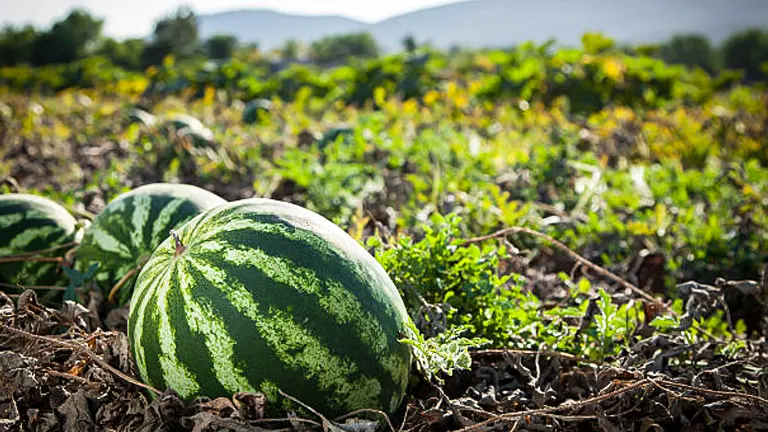
Whether you’re starting from seeds or nurturing existing plants, our guide provides expert strategies tailored for each part of the year. From choosing the right soil and location to mastering watering and fertilization techniques, you’ll learn how to care for your watermelons so they thrive and produce the most delicious fruits possible.
Table of Contents
- Understanding Watermelons and Their Nutrient Needs
- Selecting Your Watermelon Variety and Preparing for Planting
- Planting Techniques and Early Care
- Mid-Season Care, Pest Management, and Harvesting
- Advanced Growing Strategies and Optimization Tips
- Sustainable Practices and Long-term Watermelon Gardening Success
- Seasonal Care and Overcoming Challenges in Watermelon Cultivation
- Conclusion
- FAQs
Understanding Watermelons and Their Nutrient Needs
Watermelon Growth Requirements

Watermelons are thermophilic, requiring warm soil conditions and extensive sunlight exposure to thrive optimally. They necessitate a long growing season, typically ranging from 70 to 90 days after planting, depending on the variety. The warmth not only promotes germination but also plays a crucial role in sugar synthesis, contributing to the fruit’s sweetness.
Nutrient Essentials
Watermelons require well-balanced, nutrient-rich soil to support their rapid growth and large fruit production. Here’s a detailed breakdown of their primary nutrient needs:
- Nitrogen (N): Essential for vigorous vine growth, nitrogen should be plentiful during the initial growth phase. However, excessive nitrogen can lead to lush foliage at the expense of fruit development, so it should be moderated as the plant matures.
- Phosphorus (P): Critical for robust root development and overall plant health, phosphorus supports the transfer and storage of energy within the plant, which is vital for fruit development.
- Potassium (K): This nutrient is key during the fruiting stage. It aids in water regulation within the plant and improves the size, color, and taste of the fruit. Potassium also helps in the formation of sugars, which are crucial for the sweet taste of watermelons.
- Calcium (Ca): Often overlooked, calcium is vital for proper cell wall development and helps maintain healthy growth. It can prevent blossom end rot, a common issue where the end of the fruit rots before harvest.
The ideal soil pH for watermelons is slightly acidic to neutral (pH 6.0-6.8). This range maximizes nutrient availability, particularly phosphorus. Soil testing is highly recommended to accurately tailor soil amendments and optimize the growing conditions.
Nutrient Application Guidelines
| Nutrient | Application Rate (lbs/acre) | Timing |
|---|---|---|
| Nitrogen | 60-100 | Pre-planting and after fruit set |
| Phosphorus | 50-80 | Pre-planting |
| Potassium | 80-120 | Pre-planting and during fruit development |
| Calcium | 20-40 | As needed, based on soil test |
Watering Needs
Watermelons require consistent and adequate watering, especially during seed germination and fruit development, to maintain moist but not saturated soil conditions. The use of drip irrigation is recommended to minimize water waste and reduce the incidence of diseases associated with excessive moisture on leaves. Ideally, watermelons need about 1 to 2 inches of water per week, but this can vary based on temperature and soil type.
During the peak fruiting stage, managing water levels is crucial; overwatering can dilute the fruit’s sugar content, reducing sweetness, while underwatering can stress the plant, affecting yield and quality.
Selecting Your Watermelon Variety and Preparing for Planting
Choosing the Right Variety
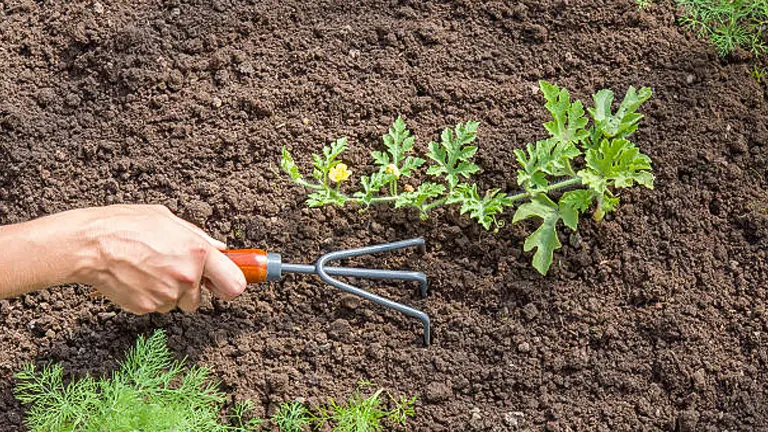
Selecting the appropriate watermelon variety is crucial and should be based on specific regional climatic conditions, soil type, and your personal preferences regarding fruit characteristics. Here’s a refined look at some popular varieties:
- ‘Sugar Baby’ and ‘Early Moonbeam’: These are compact varieties that mature quickly, typically within 75 days, making them suitable for cooler climates with shorter growing seasons. They produce small, round melons with a deep red, sweet flesh.
- ‘Crimson Sweet’ and ‘Desert King’: Known for their tolerance to heat and drought, these varieties are ideal for warmer climates. They have a longer maturation period, around 85 to 90 days, but they reward growers with larger, crisper fruits with a higher sugar content.
- ‘Charleston Gray’: This variety is valued for its resistance to common watermelon diseases such as fusarium wilt and anthracnose. Its elongated fruits with a pale green rind and sweet red flesh make it a favorite among gardeners who need a robust, disease-resistant option.
Enhanced Soil Preparation and Site Selection
Proper soil preparation is a cornerstone of successful watermelon cultivation. Here’s how to optimize your soil and site selection:
- Organic Matter Addition: Amending your garden soil with 20-30 pounds per 100 square feet of organic matter such as compost or aged manure can dramatically improve soil fertility, water retention, and drainage—essential for healthy watermelon growth.
- Soil Testing and pH Adjustment: Watermelons thrive in slightly acidic to neutral soil (pH 6.0-6.8). A soil test should be conducted early in the planning stage to determine if any adjustments are needed. Lime can be added to increase pH, while sulfur may be used to decrease it, ensuring optimal nutrient uptake.
- Macro and Micro Nutrient Availability: Ensuring the availability of essential nutrients like magnesium and boron can further promote vigorous growth and fruit quality. These elements support chlorophyll production and cell integrity, respectively.
Nutrient Requirements for Optimal Watermelon Growth
| Nutrient | Function | Recommended Application Rate |
|---|---|---|
| Nitrogen (N) | Supports leaf and vine growth | 50-60 lbs per acre pre-planting |
| Phosphorus (P) | Essential for energy transfer and root development | 40-50 lbs per acre pre-planting |
| Potassium (K) | Crucial for fruit quality and water regulation | 60-70 lbs per acre during fruit set |
| Magnesium (Mg) | Aids in chlorophyll creation | Apply Epsom salts at 2 lbs per 100 square feet if deficient |
| Boron (B) | Critical for cell wall formation and seed production | 0.5 lbs per acre, carefully measured to avoid toxicity |
Seasonal Planting Considerations
Adjusting planting times to accommodate local climate conditions is key:
- Cool Climates: Begin with indoor seed starting about a month before the last frost date. Utilizing biodegradable pots can reduce transplant shock, promoting stronger early growth.
- Warm Climates: Direct sowing is viable when soil temperatures consistently exceed 70°F. This method leverages the natural warmth to enhance germination and seedling vigor.
- Late Summer Planting: In areas with mild autumns, a late summer planting can extend the growing season, allowing for a late fall harvest, assuming no early frosts.
Planting Techniques and Early Care
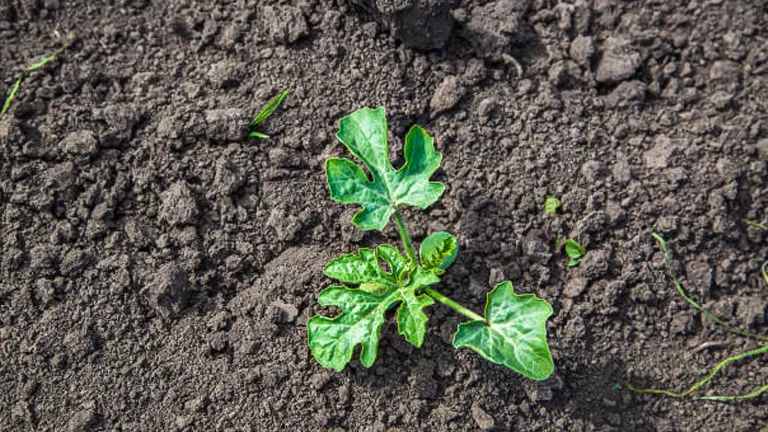
Proper planting is critical for establishing a robust foundation for watermelon growth. Here’s how to optimize the planting process:
- Seed Depth and Spacing: Seeds should be sown approximately one inch deep, a depth ideal for optimal moisture contact and root establishment. For trellised systems, space plants about two feet apart to optimize air circulation and reduce disease risk. In traditional row setups, a spacing of 4 to 6 feet between plants allows the vines ample room to spread, which is essential for healthy vine development and fruit production.
- Microclimate Management: Creating a favorable microclimate from the start can enhance germination rates and early growth. Utilize clear plastic covers or cloches to retain warmth and moisture around the seedlings, especially in cooler conditions.
Recommended Planting Depths and Spacing for Watermelon Varieties
| Variety | Planting Depth | Row Spacing | Plant Spacing | Trellis Compatibility |
|---|---|---|---|---|
| ‘Sugar Baby’ | 1 inch | 6 feet | 3 feet | Yes |
| ‘Crimson Sweet’ | 1 inch | 6 feet | 4 feet | No |
| ‘Desert King’ | 1 inch | 6 feet | 4 feet | No |
Nutrient Management
Effective nutrient management is vital from the onset of planting through the life of the plant:
- Early Growth: Initially, watermelons require a higher nitrogen content to support vigorous vine growth. A granular fertilizer with a ratio of 10-10-10 (N-P-K) is ideal for supporting early vegetative development.
- Fruiting Stage: As the plants begin to flower, the nutritional requirements shift. Reducing nitrogen in favor of phosphorus and potassium is critical for fruit development. Apply a fertilizer with a lower nitrogen and higher potassium content, such as 5-10-10, to promote fruiting.
Nutrient Application Schedule
| Growth Stage | Fertilizer Type | N-P-K Ratio | Application Rate (per plant) |
|---|---|---|---|
| Post-Germination | Granular | 10-10-10 | 1 tablespoon |
| Pre-Flowering | Granular | 5-10-10 | 2 tablespoons |
| Fruit Development | Potassium-rich | 2-8-16 | 3 tablespoons |
Temperature and Light Management
Optimizing temperature and light conditions is crucial for watermelon cultivation:
- Temperature Control: Black plastic mulch is a dual-purpose tool that warms the soil in early spring and maintains soil temperature during cooler nights. Its use can accelerate early growth by creating a more stable thermal environment around the roots.
- Reflective Mulching: The reflective properties of certain mulches can increase light exposure to the undersides of leaves, enhancing photosynthesis and overall plant vigor, crucial for healthy growth and fruit development.
Monitoring for Growth and Health
Regular surveillance of plant health helps in early detection and management of potential issues:
- Routine Checks: Regularly inspect plant leaves and stems for signs of pest activity or disease. Look for changes in leaf color, spots, or signs of wilting that could indicate water stress or nutritional deficiencies.
- Integrated Pest Management (IPM): Employ IPM strategies to manage pests and diseases without resorting to harsh chemicals. This might include the use of natural predators, neem oil applications, or environmentally friendly fungicides.
Mid-Season Care, Pest Management, and Harvesting
Mid-Season Care
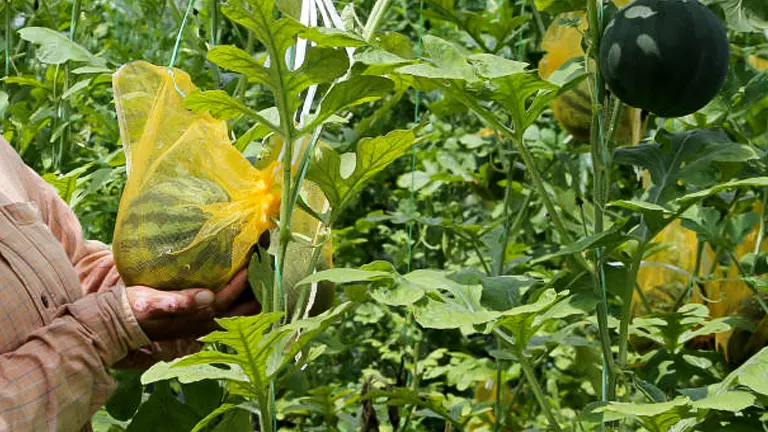
As watermelon plants transition into their vigorous growth phase, maintaining a balanced care regimen becomes crucial. This phase demands careful management of water and nutrients to ensure healthy fruit development.
- Water Management: Proper watering is essential. Too little water can stress the plants, leading to poor fruit development, while too much water can increase disease risk and reduce fruit quality. Aim to water at the base of the plants to avoid wetting the leaves, as overhead watering can promote the spread of fungal diseases. As fruits begin to form, slightly reduce watering to concentrate sugars in the fruit, enhancing sweetness and flavor. Watermelons generally require 1-2 inches of water per week, depending on weather conditions and soil type.
- Nutrient Management: Monitoring and adjusting soil nutrients during the mid-season is vital. Apply a low-nitrogen, high-potassium fertilizer to boost fruit growth without promoting excessive vine growth. This encourages the plants to channel energy into fruit enlargement and ripening rather than vine proliferation. An example of a suitable fertilizer would be a 5-10-10 mix applied at a rate of 1-2 pounds per 100 square feet.
Nutrient Requirements During Mid-Season Growth
| Nutrient | Role in Plant Growth | Recommended Application |
|---|---|---|
| Nitrogen (N) | Supports vine growth | Reduce to avoid excessive foliage |
| Phosphorus (P) | Enhances root and fruit development | Maintain moderate levels |
| Potassium (K) | Crucial for fruit quality and disease resistance | Increase application during fruiting |
Pest and Disease Management
Maintaining the health of your watermelon crop involves vigilant pest and disease management. Regular inspections help in early identification and control of potential issues.
- Common Pests: Key pests include aphids, spider mites, and cucumber beetles. Natural predators such as ladybugs and lacewings can effectively control these pests. If infestations occur, organic pesticides like neem oil or insecticidal soap can be used.
- Common Diseases: Diseases like powdery mildew, downy mildew, and anthracnose are common. At the first sign of infection, apply organic fungicides such as copper-based products to prevent the spread. Ensure good air circulation around plants by proper spacing and pruning.
Common Pests and Diseases
| Issue | Symptoms | Control Measures |
|---|---|---|
| Aphids | Sticky residue on leaves | Natural predators, neem oil |
| Spider Mites | Webbing, yellow spots | Insecticidal soap, ladybugs |
| Cucumber Beetles | Chewed leaves, bacterial wilt | Floating row covers, beneficial nematodes |
| Powdery Mildew | White powdery spots | Organic fungicides, improve air circulation |
| Anthracnose | Dark lesions on leaves/fruit | Crop rotation, resistant varieties |
Preventive measures such as crop rotation and planting disease-resistant varieties significantly reduce the risk of pest and disease problems, enhancing the sustainability of your gardening practices.
Harvesting
Proper timing is critical for harvesting watermelons to ensure peak flavor and quality:
- Signs of Ripeness: Watermelons are ready to be picked when the fruit’s underside turns from white to a creamy yellow and the tendril nearest to the fruit dries out and turns brown. The ‘thump’ test is another traditional method; a ripe watermelon will produce a hollow sound when tapped.
- Harvesting Techniques: Handle the fruits carefully to prevent bruising. Use a sharp knife or shears to cut the stem close to the fruit, avoiding damage to the vine or the melon.
- Storage: Once harvested, store watermelons in a cool, dry place. Under optimal conditions, they can be kept for several weeks.
Post-Harvest Care
After harvesting, it’s important to prepare the garden for future planting:
- Clean-Up: Remove all plant debris to reduce the risk of overwintering pests and diseases. Proper disposal of plant material is crucial.
- Soil Health Improvement: Preparing the bed for the next planting season involves enriching the soil with cover crops like clover or rye. These cover crops improve soil health by adding nutrients and preventing weed growth. Incorporate them into the soil before they set seed to maximize their benefits.
Post-Harvest Soil Care
| Task | Purpose | Implementation |
|---|---|---|
| Remove Plant Debris | Prevent pest/disease carryover | Collect and compost or discard debris |
| Plant Cover Crops | Enhance soil fertility and structure | Sow clover, rye, or legumes |
| Soil Amendment | Replenish nutrients | Add compost or organic matter |
Advanced Growing Strategies and Optimization Tips
Soil Health Enhancement Post-Harvest

After the watermelon season ends, focusing on soil health is crucial for maintaining a fertile and productive garden. Start by removing all plant residues, which can harbor pests and diseases. Incorporating organic matter, such as compost or green manure, will help to replenish nutrients and improve soil structure. Cover crops, such as winter rye or clover, are also beneficial. They prevent erosion, suppress weeds, and fix nitrogen in the soil, enriching it for the next planting season.
Extending the Growing Season
For gardeners looking to maximize their growing season, considering a few strategic approaches can make a significant difference:
- Use of Row Covers and Mulches: Installing floating row covers can protect early and late season plantings from cooler temperatures. Additionally, plastic mulches can be used to warm the soil, allowing for earlier planting and extending the growing period.
- Microclimate Creation: Establishing windbreaks or using water containers to absorb heat during the day and release it at night can create a warmer microclimate, significantly benefiting watermelon growth.
Maximizing Yield and Fruit Quality
To ensure the highest yield and best quality fruits, consider the following tips:
- Pollination Management: Watermelons rely on bees for pollination. Encouraging bee activity by planting pollinator-friendly flowers nearby or manually pollinating flowers can ensure a good fruit set.
- Pruning Techniques: Pruning excess flowers or small fruits can direct the plant’s energy into fewer fruits, resulting in larger and sweeter watermelons. However, this should be done carefully to maintain plant health and vigor.
- Regular Health Checks: Keep a close eye on your plants for any signs of stress, nutrient deficiencies, or water needs. Adjusting care promptly can prevent issues from escalating and affecting the crop.
Water Management
Proper water management is key to producing juicy watermelons. Implement a consistent watering schedule, especially during fruit development, to prevent splitting and to ensure fruits are juicy and well-formed. However, taper off watering as the fruits mature to concentrate sugars and enhance flavor.
Sustainable Practices and Long-term Watermelon Gardening Success
Implementing Sustainable Watermelon Farming Techniques

To maintain a healthy garden and ensure the sustainability of your watermelon crops over many seasons, adopting environmentally friendly practices is crucial. Sustainable farming goes beyond mere production; it involves methods that protect the environment, enhance soil fertility, and maintain water quality.
- Crop Rotation: Practicing crop rotation helps prevent soil depletion and reduces the buildup of pests and diseases associated with watermelons. Rotate watermelons with unrelated crops, such as legumes or leafy greens, which can help restore nitrogen levels in the soil.
- Integrated Pest Management (IPM): IPM is an ecological approach that combines different management strategies and practices to grow healthy crops and minimize the use of pesticides. This may include using natural predators or barriers and selecting disease-resistant varieties.
- Organic Mulching: Using organic mulches like straw, grass clippings, or wood chips can improve soil health, conserve moisture, suppress weeds, and enhance the visual appeal of your garden. As they decompose, they also add valuable organic matter back to the soil.
Water Efficiency
Water conservation is a significant aspect of sustainable agriculture, particularly important in watermelon cultivation, which can be water-intensive. Employ strategies such as:
- Drip Irrigation: This system delivers water directly to the base of the plant, reducing waste and minimizing leaf wetness, which can lead to disease.
- Rainwater Harvesting: Collecting rainwater to use in your garden not only conserves potable water but reduces your water bill and provides your plants with chemical-free water.
Fostering Biodiversity
Encouraging biodiversity in your garden can lead to a more resilient and productive ecosystem. This includes:
- Companion Planting: Planting watermelons near beneficial companions such as marigolds, which repel pests, or nasturtiums, which can lure aphids away from your watermelons.
- Creating Habitats for Beneficial Insects: Establishing areas that attract and support pollinators and predatory insects can naturally control pest populations and improve pollination rates.
Seasonal Adjustments
Understanding and adapting to the seasonal changes in your climate zone is key to successful watermelon cultivation year after year:
- Adjusting Planting Times: Based on local weather patterns, adjust your planting and harvesting schedules to avoid extreme weather conditions that could affect crop yield and quality.
- Winter Preparation: In colder regions, preparing the ground with cover crops in the fall can protect it from erosion and nutrient loss, while in warmer climates, taking advantage of mild winters can extend the growing season.
Seasonal Care and Overcoming Challenges in Watermelon Cultivation
Adapting to Seasonal Variations
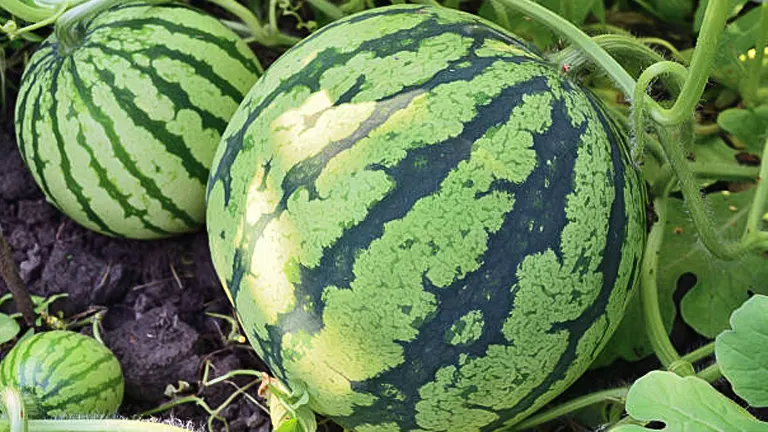
Successfully growing watermelons involves an acute understanding of the seasonal cycles and their impact on crop development. Each season brings unique challenges and opportunities for the gardener:
- Spring Preparation: In spring, the focus is on preparing the soil and setting up the field. Start by tilling the land to aerate the soil and incorporate last season’s organic matter, which will have decomposed over the winter. Testing the soil and adjusting its nutrients and pH levels based on the test results will ensure optimal growing conditions.
- Summer Maintenance: Throughout the summer, your watermelons will need close monitoring for water levels, especially during heat waves. Mulching becomes crucial in maintaining soil moisture and keeping root temperatures stable. This is also the time to watch for pest invasions and diseases as higher temperatures can increase their activity.
- Autumn Harvesting: Autumn is the time to harvest and enjoy the fruits of your labor. It’s also a period for post-harvest soil care. After harvesting, removing all plant debris and applying green manure can help maintain soil fertility and structure, preparing it for the next planting cycle.
- Winter Planning: Winter is less about active gardening and more about planning. Review the past season’s successes and challenges, order seeds for the next season, and strategize improvements. If your climate permits, consider planting a cover crop to enhance soil health through the cold months.
Troubleshooting Common Issues
Watermelon cultivation can encounter several common challenges, including:
- Pest Management: Pests such as vine borers and aphids can significantly damage crops. Integrated pest management, including the use of natural predators and organic pesticides, can effectively control these threats without harming the environment.
- Disease Control: Diseases like powdery mildew and blight are prevalent in humid climates. Implementing preventative measures such as crop rotation and adequate plant spacing can reduce these risks. For existing infections, apply appropriate organic fungicides and remove affected plant parts to prevent spread.
- Irregular Watering: Watermelons require a lot of water, but inconsistent watering can lead to issues like blossom end rot or split fruits. Establishing a regular watering schedule and using techniques like drip irrigation can help provide consistent moisture.
Advanced Techniques for Quality Fruit Production
To ensure high-quality watermelon production, consider:
- Selective Pruning: By selectively pruning some flowers and fruits, you can direct the plant’s energy into fewer but larger and sweeter melons.
- Grafting: Grafting watermelon vines onto more robust rootstocks can enhance their resilience to soil-borne diseases and pests, improving overall fruit quality and yield.
- Soil Enhancement: Regularly adding organic matter and ensuring balanced nutrient levels in the soil can lead to healthier plants and better fruits. Techniques like deep plowing and using biochar can improve soil structure and fertility.
Related Post
- How to Build a Barn: A Step-by-Step Guide for Beginners
- How to Build a Sustainable Compost Bin: Easy and Eco-Friendly DIY
- How to Fertilize Bougainvillea: A Complete Guide for Stunning Blooms
- How to Fertilize Apple Trees: Essential Tips for a Bountiful Harvest
- How to Fertilize Lemon Trees: Secrets for Thriving Citrus
- How to Fertilize Avocado Tree: A Step-by-Step Guide for Lush Growth
- 10 Best Bow Saws to Buy in 2024: Top Picks for the Money
- Best Miter Saw For Beginners
- Top 10 Pruning Saws to Buy in 2024: Best for the Money
- 7 Best Pocket Chainsaw
Conclusion
In conclusion, successful watermelon cultivation requires an understanding of seasonal nuances, diligent soil and water management, and proactive pest control. By adopting sustainable practices like crop rotation and biodiversity enhancement, gardeners can boost yields and promote ecological balance. Adapting to seasonal challenges and engaging with the gardening community are also crucial for continuous improvement. With careful planning and commitment to sustainable methods, gardeners can ensure that their watermelon crops thrive and provide delicious fruits year after year.
FAQs
- What is the best soil type for growing watermelons?
Watermelons thrive in well-drained, loamy soil with a pH between 6.0 and 6.8. Enriching the soil with organic matter such as compost or well-rotted manure can improve fertility and moisture retention, creating an ideal growing environment. - How much space do watermelon plants need?
Watermelon vines need plenty of space to spread out. When planting, space seeds or plants about 4 to 6 feet apart in rows that are 6 to 8 feet apart. This allows the vines to spread without competing for light and nutrients. - Can watermelons be grown in cooler climates?
Yes, watermelons can be grown in cooler climates by selecting early maturing varieties such as ‘Sugar Baby’ or ‘Early Moonbeam.’ Starting seeds indoors and using black plastic mulch to warm the soil can also help extend the growing season in cooler regions. - What are the signs that watermelons are ready to harvest?
Watermelons are ready to harvest when the fruit’s underside changes from white to a creamy yellow, and the tendril closest to the fruit dries out and turns brown. Additionally, a ripe watermelon will produce a hollow sound when tapped. - How often should watermelons be watered?
Watermelons require consistent moisture, especially during the period of growth and fruit development. Water deeply once a week, providing 1 to 2 inches of water. Adjust watering based on rainfall, soil type, and weather conditions to avoid waterlogging. - What are common pests and diseases that affect watermelons, and how can they be controlled?
Common pests include aphids, cucumber beetles, and vine borers, while fungal diseases like powdery mildew and downy mildew are also prevalent. Control methods include using floating row covers to protect plants, applying organic pesticides, and practicing crop rotation to prevent disease buildup. - Can watermelons be grown vertically?
Yes, to save space and keep fruits clean, watermelons can be trained to grow on a sturdy trellis. Choose smaller or medium-sized varieties for vertical growing, and support the developing fruits with slings made from netting or fabric to prevent them from falling. - What fertilizers are best for watermelon plants?
Watermelons benefit from a balanced fertilizer at planting. Once vines start flowering, switch to a low-nitrogen, high-potassium fertilizer to encourage fruit development. Always test soil before applying fertilizer to ensure that you are meeting the specific needs of your soil and plants.
For those eager to enjoy the sweet reward of homegrown watermelons, following these expert strategies will guide you through each season. Happy gardening!

Kristine Moore
Forestry AuthorI'm Kristine Moore, a seasoned garden landscaping professional with over 30 years of experience. My extensive career has been dedicated to transforming outdoor spaces into stunning, sustainable landscapes. With a deep understanding of horticulture, design principles, and environmental stewardship, I have become a respected figure in the field, known for creating harmonious, visually appealing, and eco-friendly gardens. My commitment to excellence and continuous learning in landscaping trends and techniques has solidified my reputation as an expert in garden design and implementation.




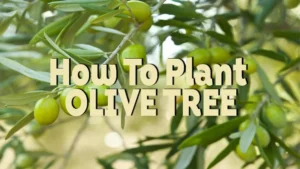
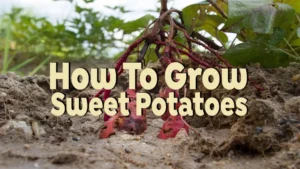







Leave your comment